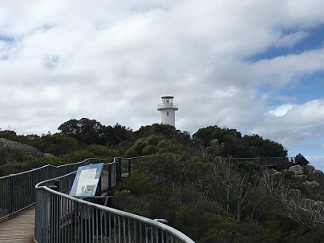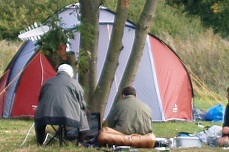 Study at Home and learn about Hiking, Camping, Bushwalking, Exploring, leading ecotours and excursions
Study at Home and learn about Hiking, Camping, Bushwalking, Exploring, leading ecotours and excursions
Learn to survive in the wild!
Professional development course, train for a career or to start a business.
Work in an outdoor supply or camping shop; or in the tourism or leisure industries.
COURSE STRUCTURE
There are 10 lessons in this course:
- Understanding Wilderness Areas
- Introduction
- Living Things
- Ecological Relationships
- Climatic Zones
- Climate/Soil/Vegetation Interrelationships
- Plant Associations
- Continental Drift
- Understanding Impacts of Weather on Wilderness Activities - Highs and Lows, Thunderstorms, Atmospheric pressure changes in storms, guide to weather symbols.
- Terminology
- Participant Fitness Levels - testing current physical fitness and further tests
- Equipment
- Introduction
- Equipping to survive - minimum essential items for the survival kit, additional items, individual medical kit
- Essential Items for Wilderness Travel
- Clothing
- Nutrition
- Food packaging
- Liability and Insurance
- Risk Assessment
- Protection from the Elements
- Introduction
- First Aid Procedures
- Hypothermia (exposure)
- Hyperthermia (heat exhaustion)
- Building a wilderness shelter
- Lighting a fire
- Mental strength
- Natural Resources
- Introduction
- Finding water - plan ahead to find water, how much water do you need? Landscape vegetation and animal signs, things to avoid, making an above ground still, soakage water, water from tree roots
- Case Study - Survival story
- Bush tucker or Survival Food - Australian bush tucker foods.
- Preparation of plant food.
- Animals for food
- Use of Bush Tucker Food
- Navigation
- Introduction
- Navigation and direction finding - how to use a compass, map reading, longitude and latitude, scale, contour lines, estimating distances, pacing.
- Navigation by the sun, moon and stars
- Dealing with Emergencies
- Introduction
- Venomous creatures - snakes - symptoms of a poisonous bite, first aid, arachnids - first aid, marine creatures - jelly fish, cone shell, first aid, scorpionfish, lionfish and stonefish - first aid, other dangerous marine creatures.
- Carnivorous mammals - bears, big cats
- Poisonous plants
- Bushfires
- Camping
- Introduction
- Setting up camp
- Camping - different styles of camping
- Successful camp programming
- Waste disposal
- Passive Land Based Activities
- Introduction
- Observing nature
- Orienteering
- Environmental activities for children
- Plant collection
- Water Based Adventure Activities
- Introduction
- Some water-based activities - snorkelling, scuba, sailing, speed boating and jet skiing, canoeing, white-water rafting, water skiing.
- Active Land Based Adventure Activities
- Introduction
- Activities - abseiling, hang gliding, rock climbing, snow skiing, snowboarding
- Motorised Vehicles - landscape impact, safety, considerations
- Mountain Bikes
- Horse Riding
Each lesson culminates in an assignment which is submitted to the school, marked by the school's tutors and returned to you with any relevant suggestions, comments, and if necessary, extra reading.

Duration: 100 hours
AIMS
- To appreciate the scope and implications of ecotourism opportunities in wilderness areas.
- To be able to prepare for an excursion into a wilderness area
- To determine appropriate methods of protecting against the elements.
- To determine different uses for natural resources in the wilderness.
- To be able to navigate in a wilderness area using a variety of different techniques.
- To deal with a range of emergencies in a wilderness situation, including developing contingency plans and determining appropriate first aid.
- Explain campsite establishment and management.
- Determine appropriate procedures for managing different passive wilderness activities.
- Determine appropriate procedures for managing different water based wilderness activities.
- Determine appropriate procedures for managing different active wilderness activities.
WHAT NEXT?
Register to Study -Go to panel toward top of this page (right column)
or
Get Advice -Use our FREE COUNSELLING SERVICE to contact a tutor
CLICK TO CONTACT US